Hunting season is here! Or if it isn’t yet, it’s right around the corner. Often this means inclement weather, rain, snow, hail, cold, etc. Many hunting seasons have yet to start and if you’re one of those people who hasn’t been practicing all summer at the range and need to get your rifle sighted in before the big weekend, you might want to consider some of these tips on how to sight in your rifle for hunting season – before you head out on a hunt. A proper zero can help to avoid devastating misses, inaccurate shots and help you to have a more successful hunt.
Sponsored by Fiocchi
Accuracy Matters
Do not rely on your rifle being boresighted at the gun store as your final zero. This is and never will be a replacement for going to the range and zeroing your firearm. Boresighting is meant to get you closer to your zero point so that you will be in the general area when it comes to sighting in your rifle. It can save time and ammunition, but is not meant to be the end all. Accuracy when hunting can only be achieved by properly sighting in your firearm. You may read about how to boresight a rifle at this helpful post.
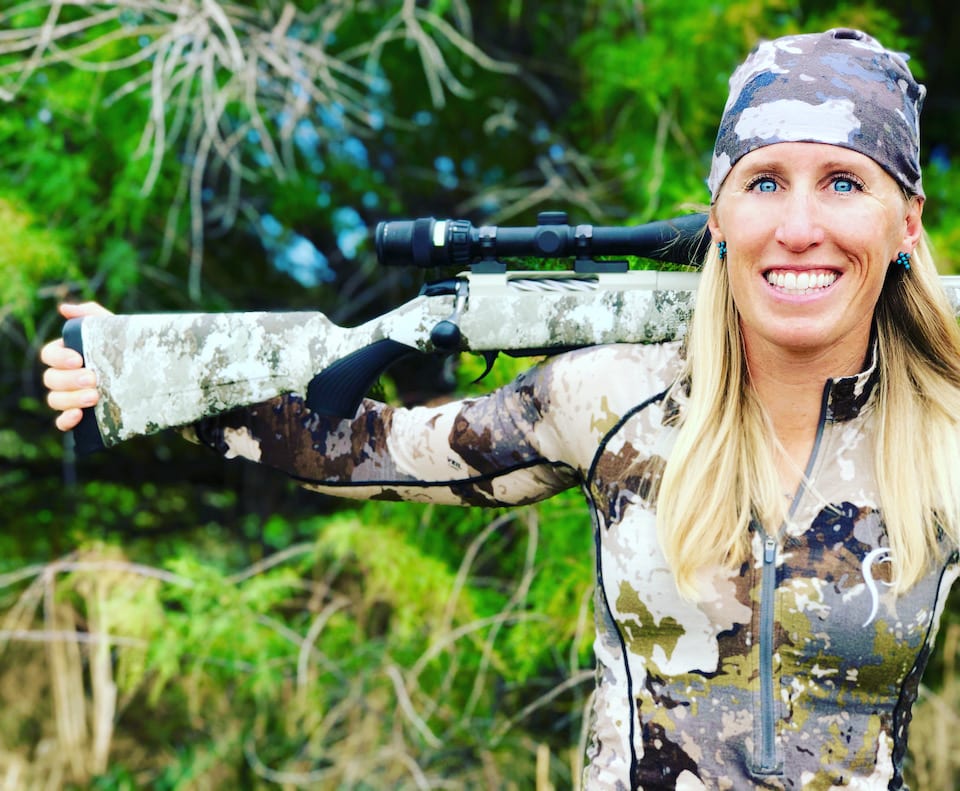
Some things to consider about this process is how the cold affects the accuracy of your rifle. Both the barrel itself and the ammunition can be affected by the cold, and your barrel won’t be “warm” when out hunting. Your shot will come from a cold barrel. Take this into account when sighting in; do not take shot after shot and let your barrel heat up. Take a few shots, let the barrel cool down and then take a few more. You don’t want your barrel hot when sighting in because this could change the accuracy and your zero. When a barrel heats up it expands and when the barrel is cold, it contracts. These reactions will affect your zero, so you want to have your gun sighted in at the temperature (or as close to) that you will be hunting in.
Ammunition Choice
It’s important if you are going to hunt, or shoot in colder fall temperatures, that you test your ammunition in those conditions. When testing your ammunition in the cold, make sure that the ammo and rifle are the temperature of what you’ll likely hunt in. Don’t just take your ammunition and rifle out of your truck and shoot it right away in cold weather. Set the ammo and rifle outside in the cold for a while, as if you had been sitting in the tree stand for a while with your rifle on your lap. Ammunition fired in colder weather may develop inadequate ignition, resulting in low pressure and reduced velocity. Most factory ammunition has a pretty wide range of temperature, and chances are you’ll have no problem in most conditions.
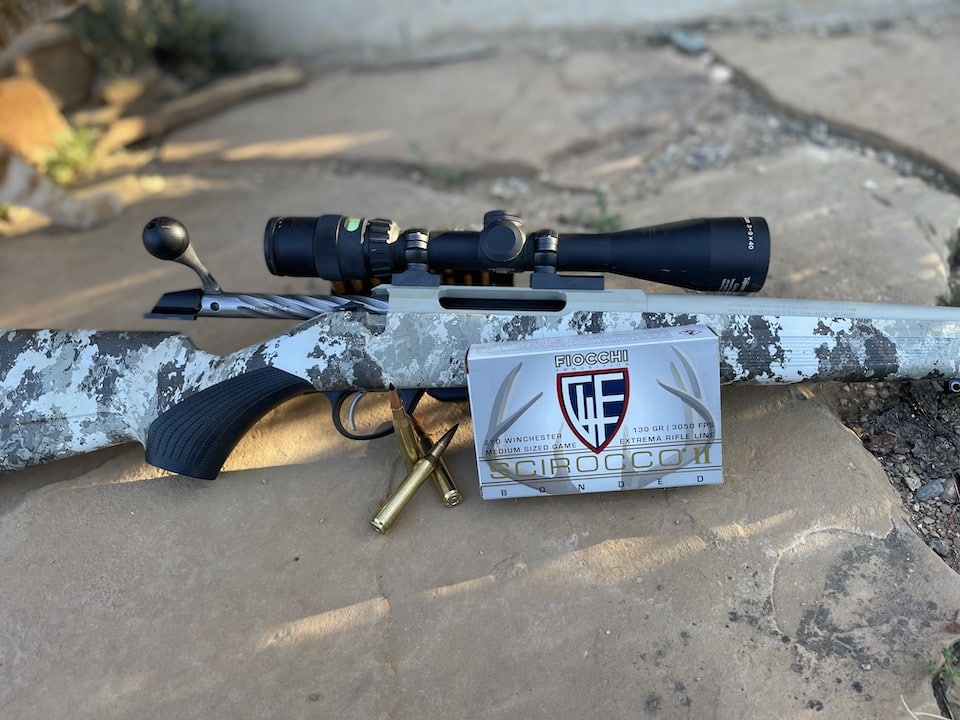
We’ve found that Fiocchi shoots exceptionally well in the cold. I have been using the Fiocchi Hyperformance Swift Scirocco – 130 grain in .270 Winchester – for elk, deer, bear and antelope. It works great in all weather conditions, from hot to below-freezing temperatures. Testing your ammunition in the cold to make sure that it shoots properly in your barrel, can cycle well in your gun for either a semi-auto or bolt gun, is a good idea to avoid any missed opportunities in the field. You can check out the great line of Fiocchi ammunition for hunting here.
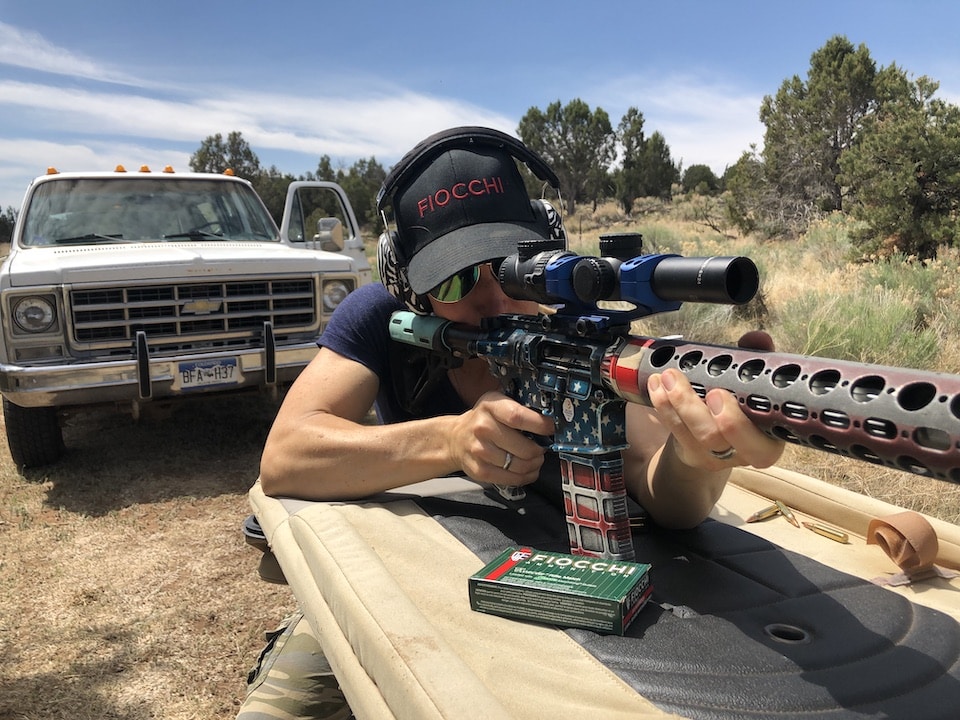
Taking a Fouling Shot Through the Barrel
Speaking from experience in Olympic Biathlon, the dirtier your barrel is in the cold, the more likely your groups will spread. I’m specifically talking about a real dirty barrel. All rifles are different, and you may find that there is a difference in accuracy from your first shot in a clean barrel versus a barrel that has had a “fouling” shot versus a barrel that hasn’t been cleaned all year. By clean, I mean that your barrel has been cleaned and contains little-to-no-oil from cleaning or gunpowder residue. By fouling shot, I am talking about the first shot that is fired through a clean barrel. Many people take a fouling shot, as they find there is a difference between when you take a shot in a clean rifle and after that first initial shot. If you are hunting deer or elk and you are likely to take just one shot at an animal, a fouling shot is not a bad idea. You can take the fouling shot at the range when you are sighting in your rifle. Sight in your rifle as normal, then run a patch(es) through it to get it clean, and then shoot one more shot to “foul” the barrel. Now you’re ready.
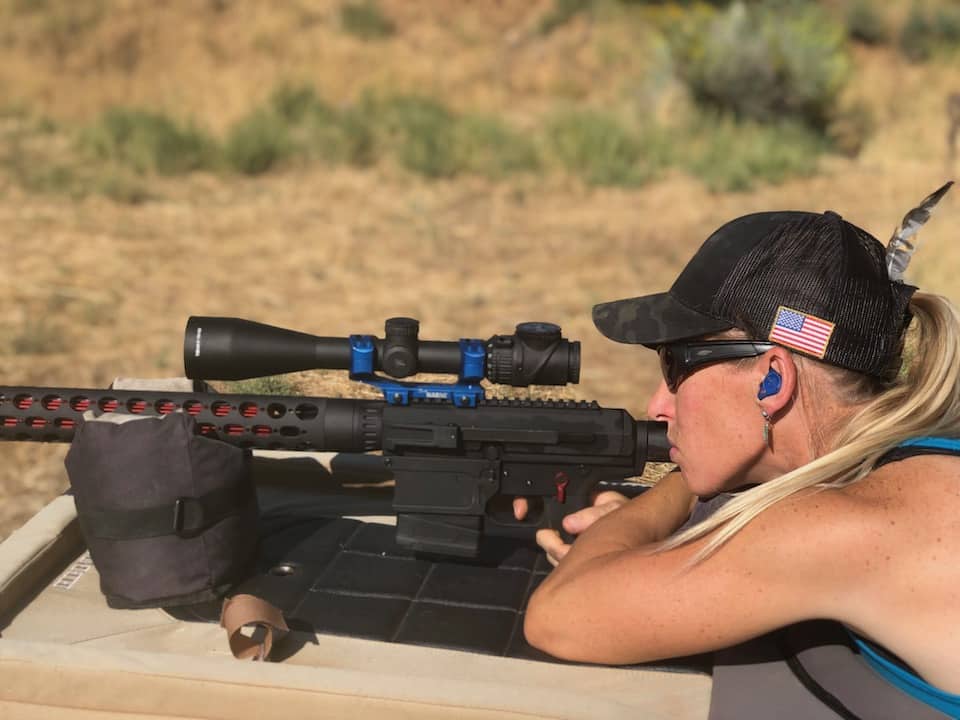
Zeroing (Sighting in Your Hunting Rifle)
The method I use when sighting in a rifle, especially a new one, is to start close. Start at 50 yards, or closer, to make sure you are on paper and relatively close to center. This doesn’t and shouldn’t require too many shots, but will help eliminate more shots when starting at farther distance. From there, I work out to the distance I want to zero at for a particular hunt. For my .270, I prefer to zero 1.5 inches high at 100 yards so that I am dead on at 200 yards. It’s not a bad idea to check the ammo’s drop at different distances. Many ammunition boxes will have the data on the box as to the drop of the bullet at certain distance, but this is only a reference and not the bible when it comes to hitting at long distance. Things like height over bore, altitude, wind, barrel twist, speed of the bullet, humidity, barometric pressure, good quality ammunition, all play a role in the drop of your bullet at certain distances. There are quite a few apps out there that can help you dial everything in – if you have the right data. If you don’t, then I recommend taking the time to take some good shots from a bench on paper at the distances you think you will be hunting, or more importantly, the distances you are comfortable shooting. Record how much the impact drops at certain distances. Never take shots longer than you are confident taking, or that your firearm is capable of making.
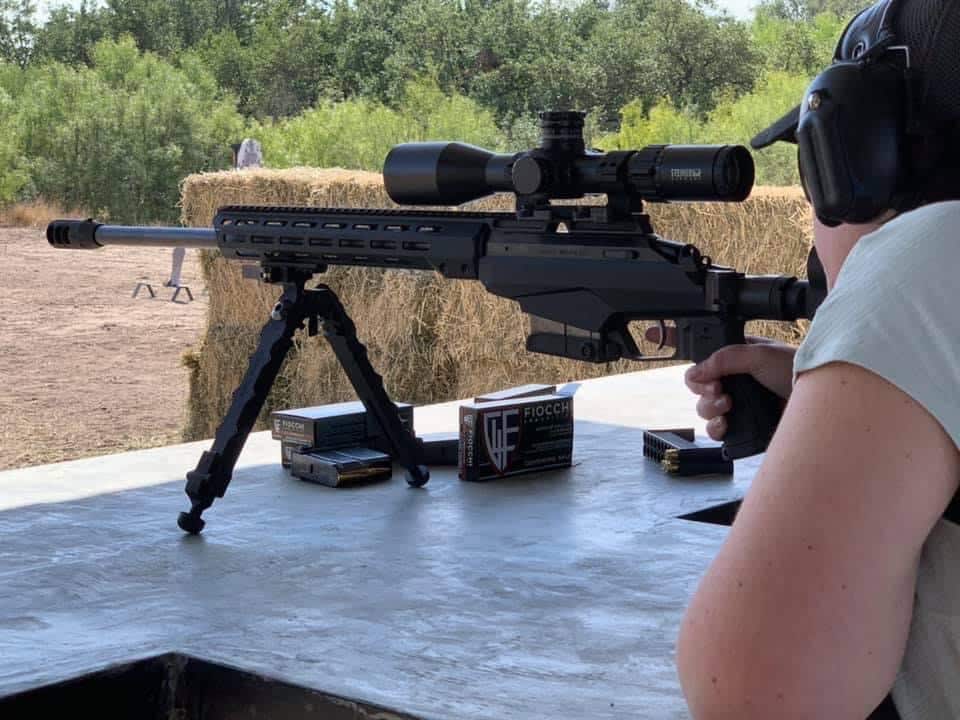
From the bench, it is extremely important to have as many points of contact as possible. By this, I mean both elbows touching or firmly on the bench, feet planted and not up on your toes, gun solidly in your shoulder, forend of stock in rest or on sandbags, etc. Make sure your elbows aren’t hanging off the side or in midair because this will create movement and can affect your shot. Getting as precise a shot as you can when sighting in will ensure you are properly zeroed. Using things like lead sleds will help, too, but learning how to take a good, controlled shot will help even more.
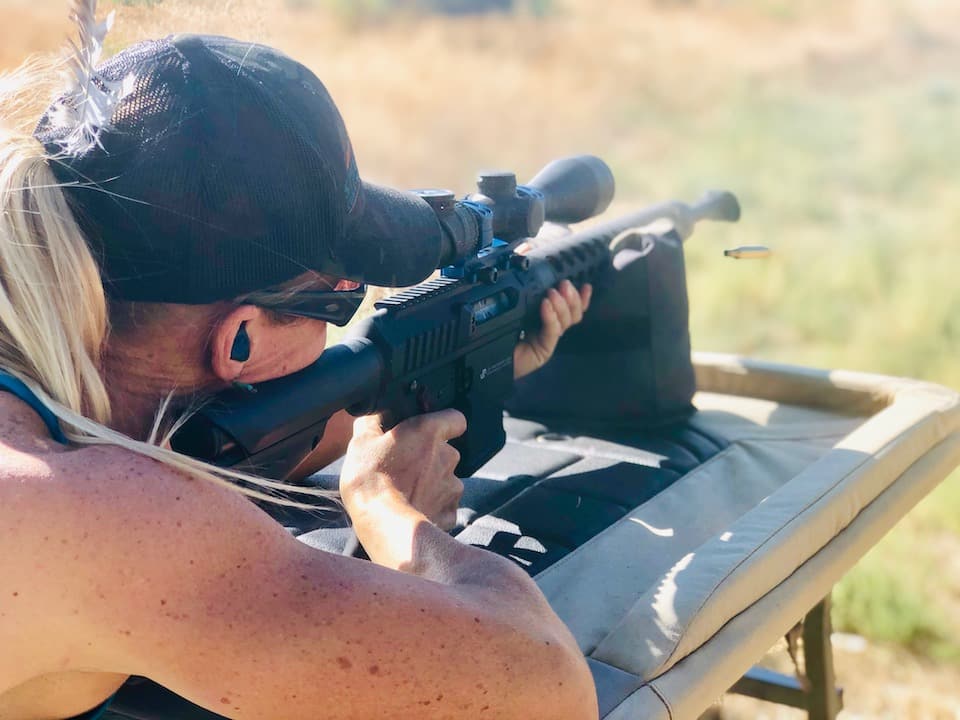
Once you get a good group and are at the point where you are happy with your zero, take a few more shots from different positions to practice what you might encounter in the field. If you are shooting from an elevated blind, try to shoot from this position. If you are shooting off sticks, then practice that. If shooting prone, try that. If you are doing spot-and-stalk, and don’t know the position you will be in, then practice as many positions as possible. Building confidence in taking a well-placed shot is half the battle. Take the time to get your rifle properly zeroed and you will increase your chances of having a successful hunt and precise shot in the field.
Lanny Barnes is a three-time Olympian in Biathlon, as well as a National & World Champion in several shooting disciplines. She is currently teaching courses to military, law enforcement and competitive shooters on physiological and psychological aspects of shooting and is the director of Commercial Sales for HIVIZ Sights. Lanny and her twin sister spend much of their free time traveling around to schools, 4-H clubs, Boys & Girls Clubs, etc., talking to them about following their dreams, setting goals, and leading a healthy active lifestyle. Taking wounded vets and terminally ill kids on hunts through Freedom Hunters and OE4A is also one of Lanny's passions. View all posts by Lanny Barnes